A growing Wisconsin brewery faces high demand, tight supply
The pandemic and international conflict have wreaked havoc with supply chains around the world – Octopi Brewing is adjusting to these increasingly uncertain business conditions, trying to keep raw materials flowing and machinery running as interest in its canned beverages grows.
By Will Cushman | Here & Now
May 25, 2022 • South Central Region
Wisconsin manufacturers are continuing to be challenged by supply chain dysfunctions amid a sustained rise in materials and labor costs — a pattern that began with the COVID-19 pandemic and has continued into 2022.
Unpredictable consumer demand, trade barriers, materials shortages, disappointing crop harvests and Russia’s invasion of Ukraine have all played a role in sending manufacturing costs soaring in the United States. The experiences of one growing Wisconsin business – a contract brewer in Dane County – underscores the persistent messiness of the global supply chain.
“The pandemic has been … what’s the right word? Very interesting and very volatile in our business,” said Isaac Showaki, owner of Octopi Brewing in the Madison suburb of Waunakee.
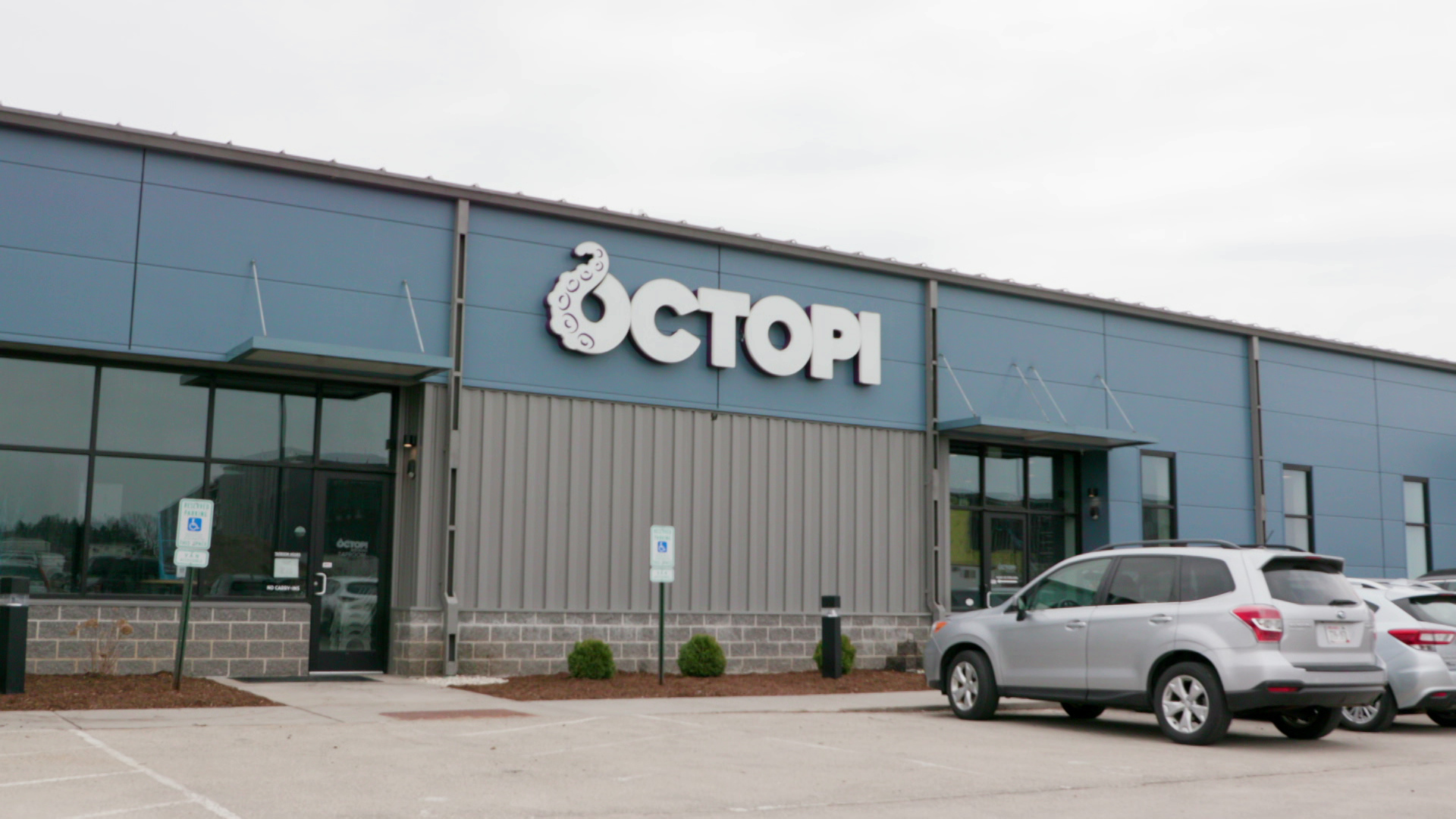
Octopi Brewing opened in 2014 in the Madison suburb of Waunakee. Octopi brews many types of alcoholic and non-alcoholic beverages, primarily on a contract basis for other brands. Cars are parked in front of the entrance to its production facility on April 27, 2022. (Credit: PBS Wisconsin)
Showaki opened Octopi in 2014 expecting some of the typical challenges that come with starting a business. He never imagined the dizzying disruptions that accompany a long, deadly pandemic.
The trouble began in March 2020, when the spread of COVID-19 prompted public health restrictions and consumer actions that ground public life and various sectors of the economy to a halt.
“When it hit in March, all of a sudden, over 48 hours, about 60% of our orders got canceled,” Showaki said.
Octopi brews beer, hard seltzers and other beverages. Its core business is producing drinks on contracts, primarily for brands that sell in supermarkets.
After only a couple weeks of lockdowns, though, it became clear to Octopi’s clients that demand for supermarket products like canned beverages was about to go into overdrive. And so began an odyssey of market unpredictability that has tested Octopi’s business model — an ordeal extending now more than two years.
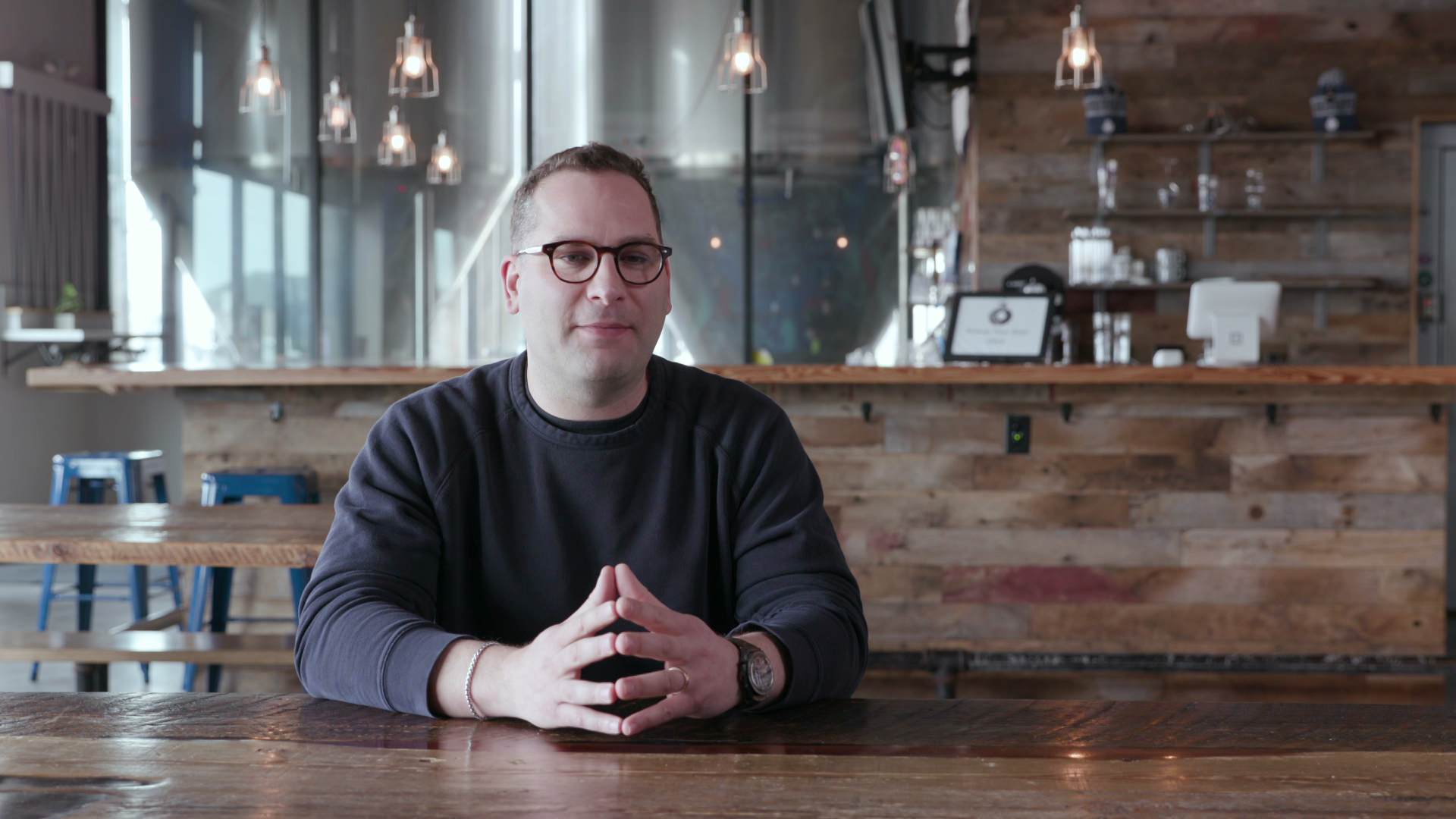
Isaac Showaki is the founder and owner of Octopi Brewing. Showaki said the pandemic has been “very volatile” for the business when interviewed at the brewery on April 27, 2022. (Credit: PBS Wisconsin)
“Orders started coming in fast and furious, and we got really busy really fast,” Showaki said. “The demand for just consumer product goods, especially in the off premise and the supermarket chains, went through the roof. So 2020 was a very scary time, but then it was like a really good time for us.”
Those good times relied on a global supply chain that had never been subjected to a stress test like a multi-year pandemic. Octopi’s supply chains fared relatively well in 2020.
“At that point, I didn’t think there were any issues keeping up with the demand because anything we needed we were getting,” said Showaki.
But that began to change as signs of supply chain trouble emerged.
“I would say end of 2020, beginning of 2021, we started seeing the rumblings,” he said.
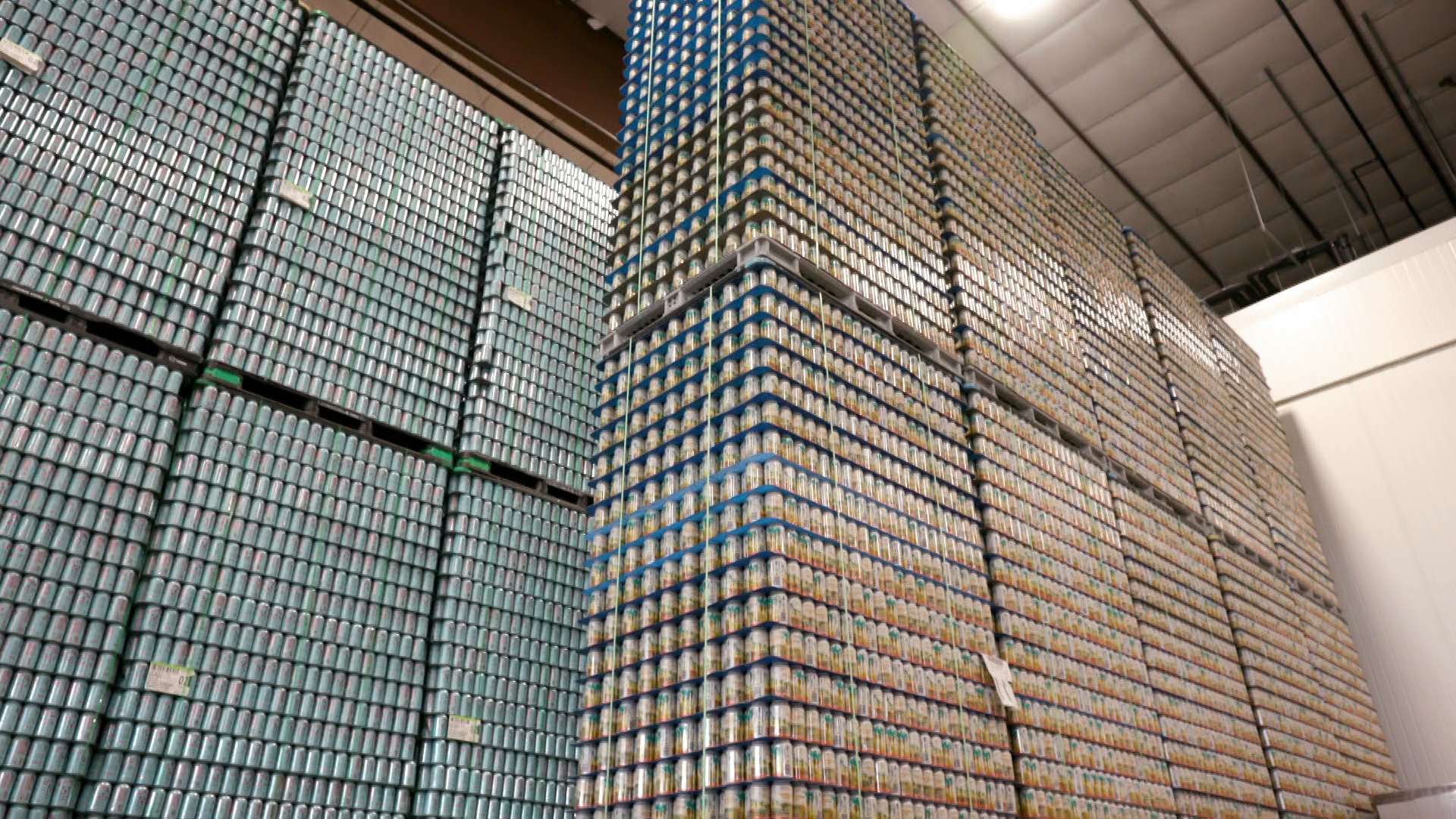
Stacks of aluminum cans sit in Octopi Brewing’s production facilities waiting to be filled on April 27, 2022. Tariffs on aluminum and supply shortages made cans some of the first materials Octopi struggled to secure during the pandemic. (Credit: PBS Wisconsin)
First, tariffs on aluminum sent the price of cans higher. Those tariff-driven price increases collided with an ongoing shift in consumer preferences away from beverages in glass bottles and toward those in aluminum cans. Rising demand meant not only that the cost of cans was surging, but they were increasingly difficult to come by at any price.
“We started hearing of demand issues, right?” Showaki said. “Like, ‘Oh, we, we can’t supply all the, all the items, all the cans that you need.’ Then it was glass.”
By late 2021, supply chain snags snowballed into a global mess, and not just for Octopi or the beverage industry. In a fall 2021 survey of Wisconsin manufacturers, business leaders said the two most pressing issues they faced were an unreliable supply and skyrocketing prices of those materials.
“It was just not one thing – it was everything [that] started getting affected. Every single piece in the supply chain, from raw materials to packaging materials – we just started having issues of not being able to get the product or significant price increases that were unprecedented,” Showaki said. “I was talking to our CFO, [and] I think the smallest price increase was about 15%. But on average, it’s been between 20% and 25% over the last six months.”
Everything from bulk fruit to paper packaging and labels were becoming increasingly scarce and expensive.
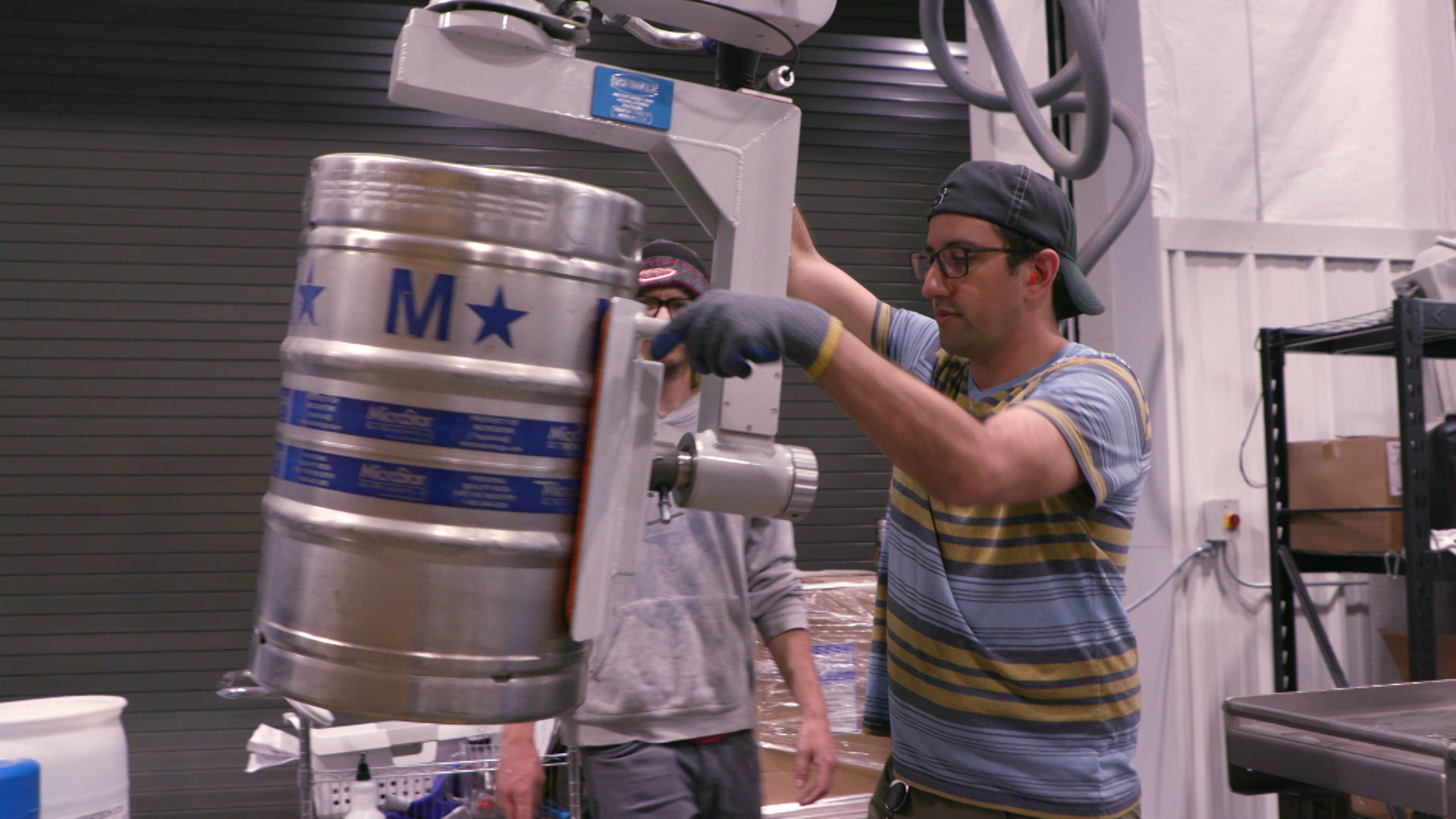
Workers maneuver a keg after it came off a filling line at Octopi Brewing’s production facilities on April 27, 2022. (Credit: PBS Wisconsin)
While factors driving price increases on individual materials can be complex and nuanced, one major contributor simply was the sudden, unexpected and drastic disruptions wrought by the pandemic.
COVID-19’s most dramatic disturbances to daily life are well in the past throughout much of the world, but outbreaks continue to wreak havoc on the flow of people and products, particularly in China. These unpredictable disruptions can have cascading and long-lasting effects on manufacturers that built their supply chains according to a “just-in-time” concept where the flow of parts and materials is tightly choreographed based on expected demand.
“We’ve built a supply chain system that includes factories, that includes distribution centers, that includes transportation methods and all that stuff. We’ve built that to handle a certain capacity that we thought was coming at us,” said Jake Dean, director of the Grainger Center for Supply Chain Management at the University of Wisconsin School of Business.
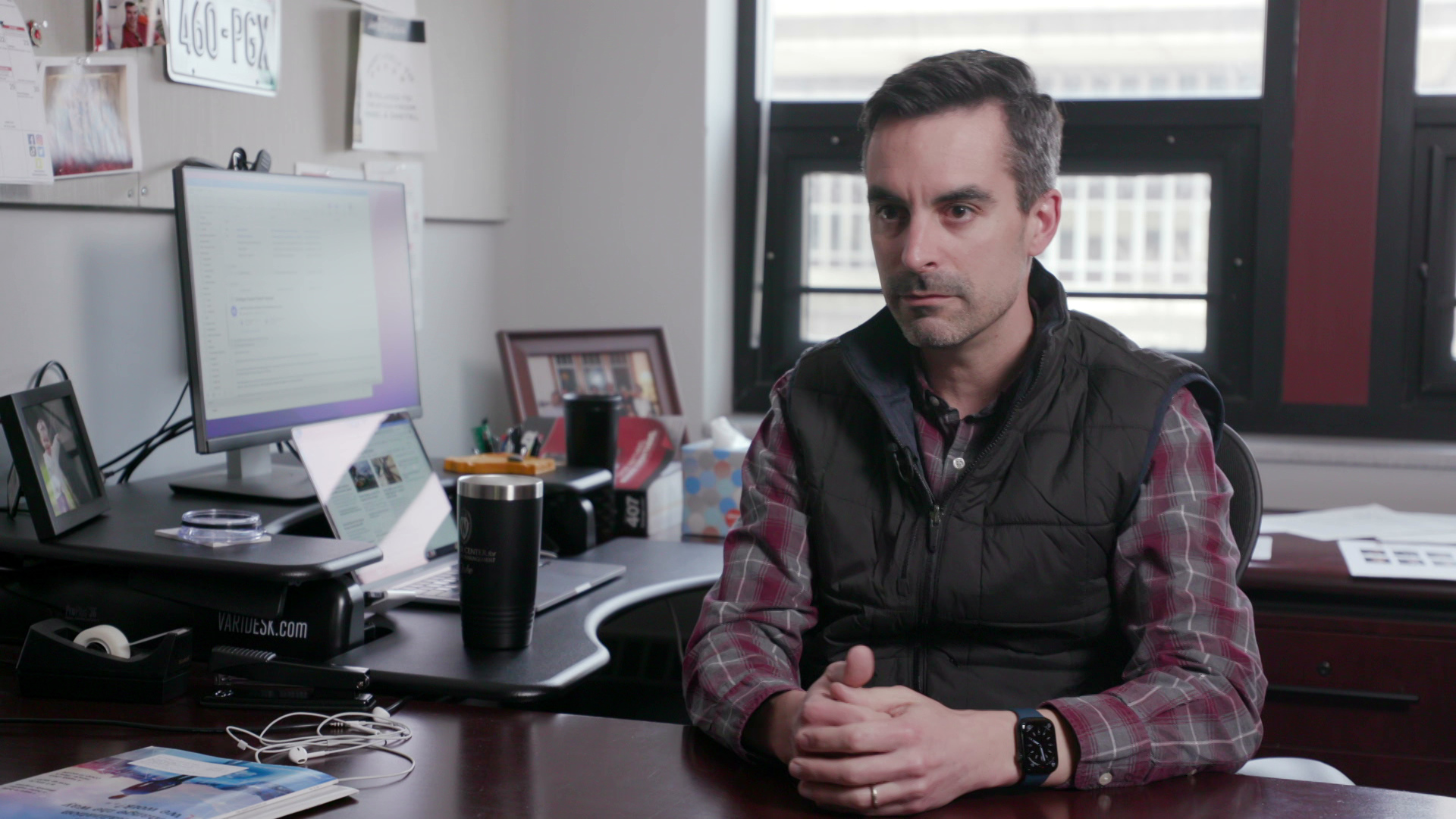
Jake Dean is the director of the Grainger Center for Supply Chain Management at the University of Wisconsin School of Business. He speaks about supply chain difficulties in the economy in an April 27, 2022 interview. (Credit: PBS Wisconsin)
Dean studies how supply chains work, or in the last couple years, more like how they come apart.
“So, it’s been a really fun job to be in over the last couple of years as an observer of supply chain rather than as a practitioner of supply chain,” he said.
Supply chain practitioners have been buffeted by a whirlwind of challenges since 2020: factory closures, materials shortages, worker shortages and rising labor costs. The global shipping industry has been left in disarray as container ships have piled up at ports by the hundreds. Perhaps the biggest challenge has been unpredictable, and highly variable, demand.
“We’ve invested a lot in supply chains over the years figuring out what and where demand is and what we need to satisfy and those sorts of things,” Dean said. “But part of those things being accurate requires some brainpower and computational power on, to a certain extent, past behavior. And when you have no past behavior to model, you don’t know what happens when the world economy goes screwy.”
To deal with this unpredictability, manufacturers have had to resort to aggressive problem solving.
At Octopi, the company’s CFO has spearheaded these efforts. Over the last couple years, a big part of Joel Yaeger’s job has been adapting the business to weather supply chain problems. That means identifying as many backup suppliers as possible for key materials like cans and paper packaging. It also means renegotiating contracts to reflect longer lead times and rising prices.
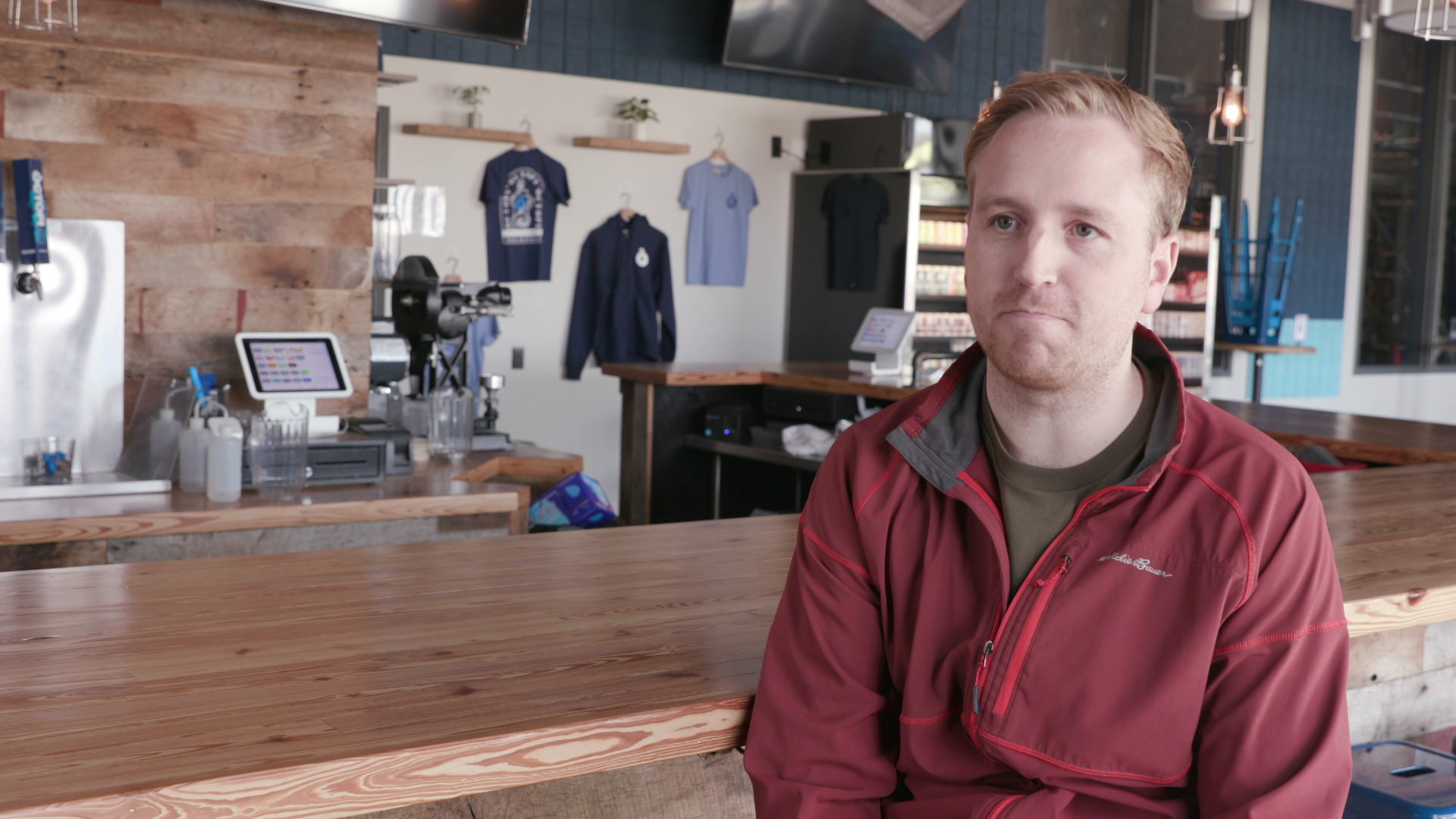
Joel Yaeger is Octopi Brewing’s chief financial officer. He has spearheaded the company’s efforts to find solutions to its many supply chain problems since the pandemic started. He is seated in the brewery’s tap room on April 27, 2022. (Credit: PBS Wisconsin)
“Adaptability overall has been kind of the theme of covid,” Yaeger said.
It’s not only the pandemic and tariffs disrupting Octopi’s supply chain. Malt is a key brewing ingredient derived from barley. North America’s Great Plains are a global center of barley production, and in 2021 an intense drought across the region cut the region’s barley harvest to historically low levels. The 105 million bushels of barley produced in the U.S. for the year amounted to American farmers’ lowest harvest in more than a century.
“They had a horrible crop year last year, so about 25 to 30% of the crop was lost,” Showaki said. “So then there was a small supply of malt and then the price went up 25%. Unprecedented. We used to get like two or 3% price changes.”
The outbreak of war in Europe has exacerbated these problems.
“Ukraine’s a huge producer of malt,” said Yaeger.
Russia is the world’s largest producer of barley, meanwhile, and its invasion of Ukraine and subsequent economic sanctions imposed by the U.S. and other nations have further choked the supply of malt.
Supply chain woes have not only impacted Octopi’s production — they’ve also scrambled the company’s expansion plans. In April 2022, a space intended for a massive, new canning line stood empty weeks after it was supposed to come online. That’s because a long-term semiconductor shortage meant that the line’s high-tech controls wouldn’t be ready for months, even if the physical machinery was installed.
Octopi’s empty new canning line demonstrated the wide-ranging effects of supply chain delays even when they’re limited to a small number of crucial parts.
“It might be two parts that are waiting to finish the machine, but without those two parts, you can’t make the machine,” Dean said.
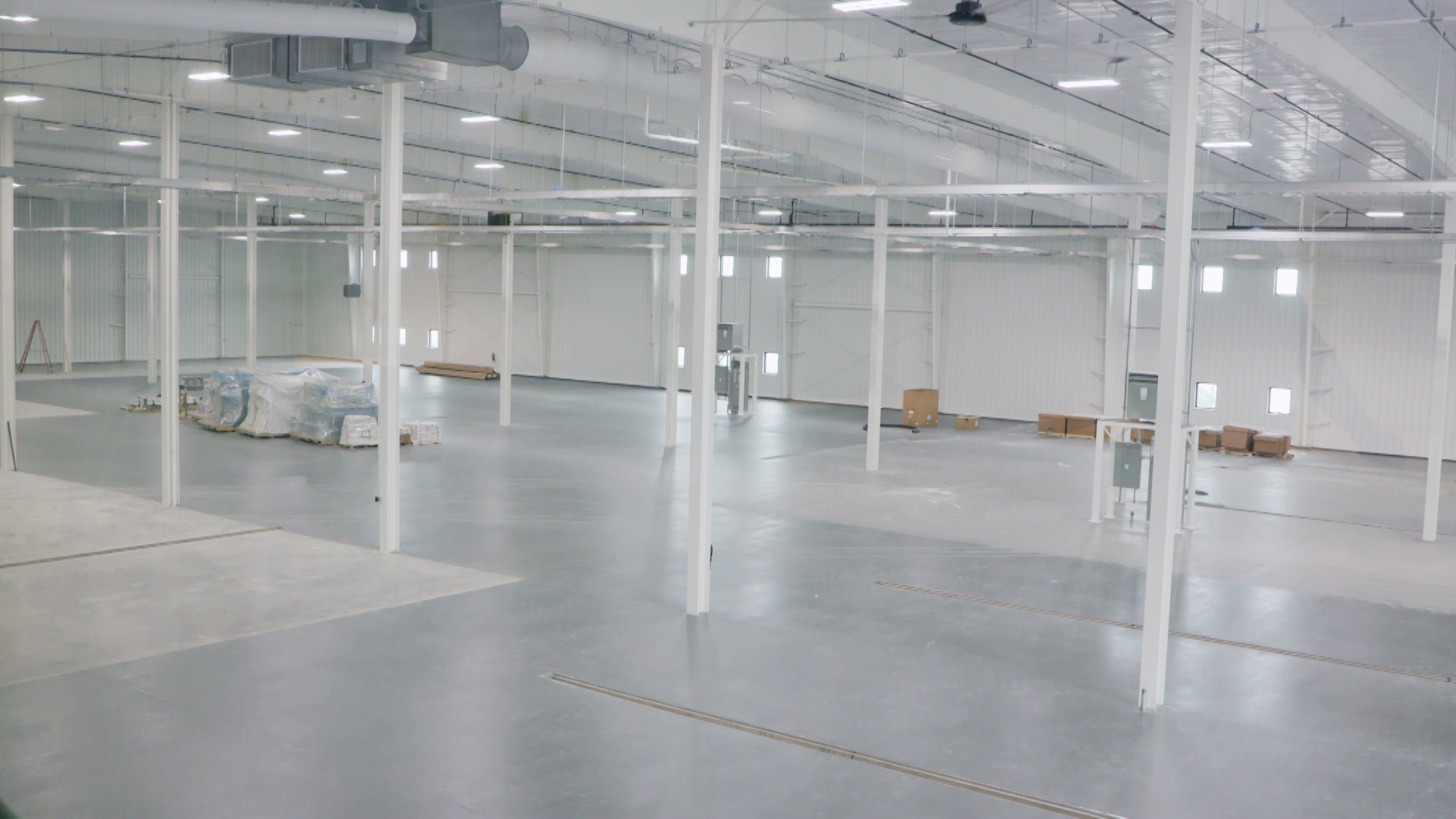
Supply chain problems have delayed a planned expansion of Octopi Brewing’s facilities. On April 27, 2022, a warehouse-sized room that had recently been completed stood empty as it awaited a large new canning line. The line’s delivery has been delayed by months as the supplier awaits semiconductor microchips for its high-tech controls. (Credit: PBS Wisconsin)
Octopi’s supplier indicated the new canning line should be ready to operate by early fall. That also happens to be around when Showaki expects consumers will feel the full weight of price increases his business has encountered.
“We’re just giving our price increases to our clients, which is going to take a few months to get to the retailer, which might take a few months to get to the end consumer,” Showaki said.
These price increases on everything from craft beers to probiotic energy drinks are likely to add further fuel to inflation, which had already risen to 40-year highs in early 2022. In response, the Federal Reserve has started ratcheting up interest rates in a bid to tackle soaring prices by cooling consumer demand. Returning to some level of normalcy or predictability in demand will be key to improving supply chain dysfunction, according to Dean.
“As long as consumer behavior is unpredictable, supply chains are going to be unpredictable,” he said.
While there are signs demand may be normalizing through a combination of higher interest rates and fewer pandemic-related supply bottlenecks, it’s no sure bet. Over the near term, global turmoil will likely continue to keep consumers, and manufacturers, on their toes.
 Passport
Passport





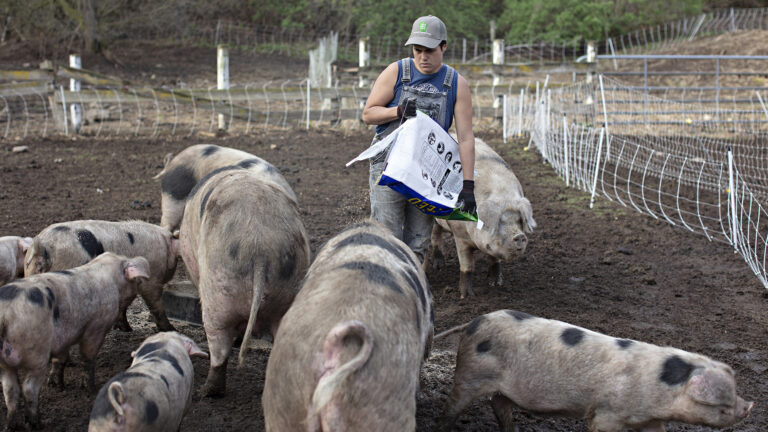


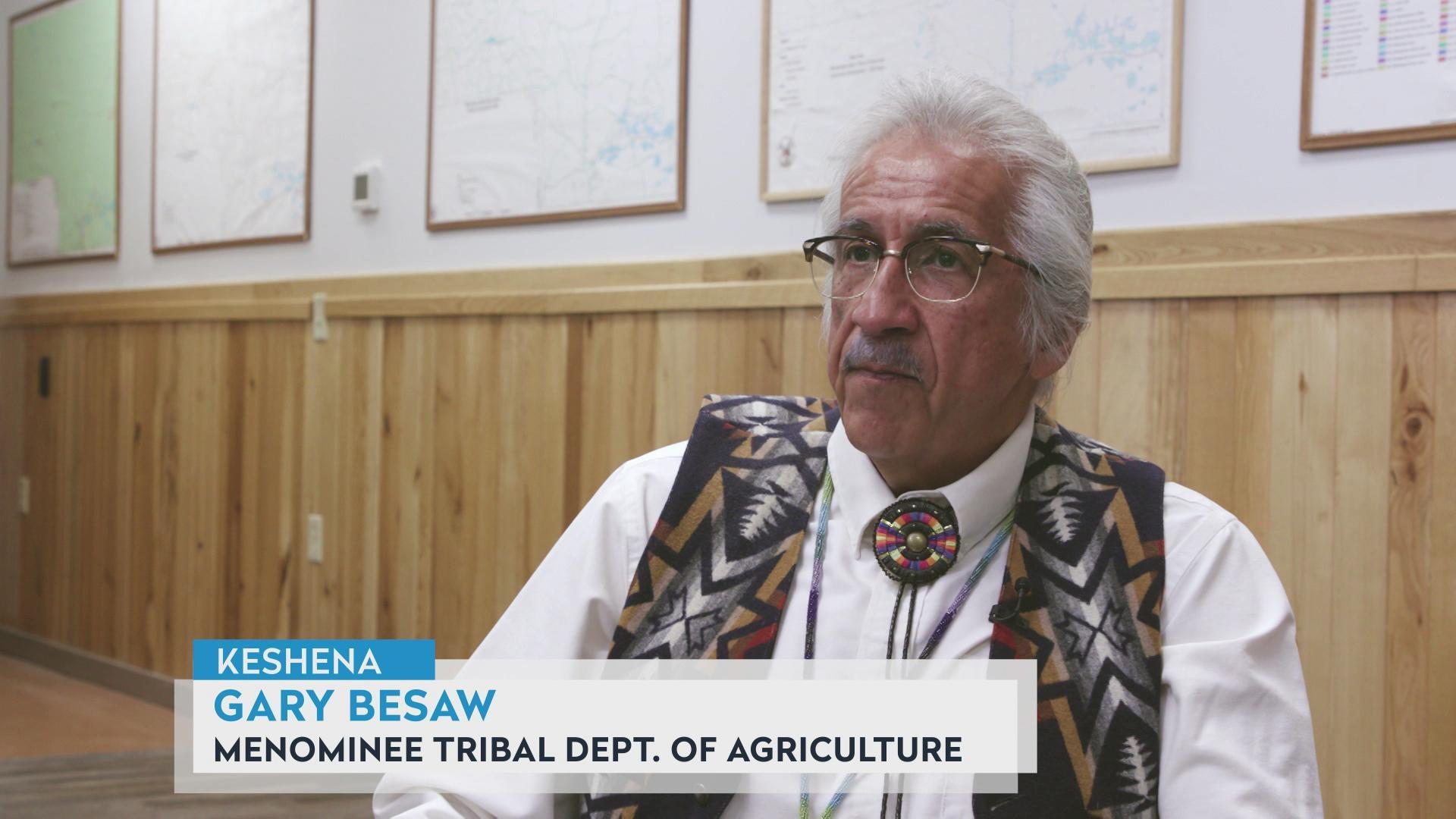


Follow Us